Environmental Defense Fund — Monitoring isn’t the fisherman’s enemy
 The port of New Bedford has been rocked by allegations of widespread and longstanding corruption by one of the industry’s biggest players. It is understandable that shocked fishermen, regulators, and community leaders are casting around for causes and solutions. Some have contorted the facts to fit their arguments against sector management. The truth, however, is that this alleged criminal misconduct started decades before the transition to sectors, and exploited a far older management flaw: the lack of sufficient monitoring in the fishery. It is a key reason why the fishery continues to be in crisis and in the headlines; and in the wake of this latest scandal it must be urgently addressed. Read the rest here 09:49
The port of New Bedford has been rocked by allegations of widespread and longstanding corruption by one of the industry’s biggest players. It is understandable that shocked fishermen, regulators, and community leaders are casting around for causes and solutions. Some have contorted the facts to fit their arguments against sector management. The truth, however, is that this alleged criminal misconduct started decades before the transition to sectors, and exploited a far older management flaw: the lack of sufficient monitoring in the fishery. It is a key reason why the fishery continues to be in crisis and in the headlines; and in the wake of this latest scandal it must be urgently addressed. Read the rest here 09:49

































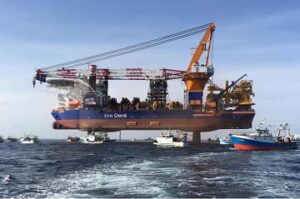

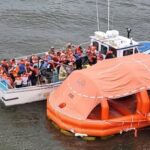




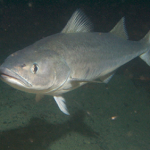
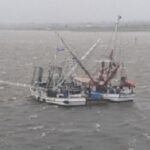

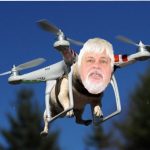



Now let’s see if you as EDF employees can be just a bit objective here, Joanna and Josh. The accumulation of quota by one individual or corporate entity is a function of ITQ catch shares; it is called “consolidation”. This consolidation and “reduction of fleet over-capacity” was a stated goal of Jane Lubchenco and EDF when the ITQ catch shares were ramrodded through the council system in 2009-2010 here in New England.
Of course, the alleged violations of the New Bedford company pre-date catch shares, we know that, but that’s not an argument for or against ITQs. The argument against catch shares, aka ITQs, aka sector management, is that when all that quota power is concentrated in the hands of a few, rather than with an entire fleet of family owned one-boat, one-license businesses, the opportunities for profiteering chicanery are greatly enhanced—isn’t that evident? Is that the contortion of the facts that you refer to in your defensive piece?
Now let’s talk about an opportunistic leap to fish around for causes and solutions that disingenuously fit an agenda. Almost immediately after the news broke of the New Bedford raid, EDF’s Josh Wiersma had a statement in the paper regarding the cause of this raid situation being a lack of at sea monitoring, and the solution, of course, was more at sea monitoring.
This defense of the NOAA monitoring programs occurs auspiciously during a period of the court’s deliberation on a lawsuit brought by fishermen against their having to pay the bill for NOAA’s programs of onboard monitors.
Just in case you’re not familiar with the existing monitoring of a fishing vessel at work, Federal, State, US Coast Guard, agents board vessels at sea and check catch and gear randomly. Captains at sea are required to: report catch electronically on a daily basis, they are required to report each trip either in hard copy or electronically days before they depart in order to give the private, for-profit agencies, that supply the monitors, plenty of time to assign and transport someone to accompany the vessel.
At the close of the trip the Captain is responsible to report the “code” or acronym of all the species they fished for and landed, the pounds they caught and landed, the dealer name and license number that bought the fish, the port and state and date of the landing, and of course, the vessel name, document number, permit number, date, hour, and minute they leave port, date, hour, and minute they land, number of crew, type of gear size of mesh, quantity of gear, size of net, fishing depth (in Fathoms), number of times net is hauled, number of hours and minutes net is in the water fishing, the specific area on the chart that is fished, the latitude and Longitude where the fishing takes place.
The vessel is monitored through a Vessel Monitoring System using GPS and locating the exact location of the vessel at all times. Currently the vessel is also required to employ an AIS or an electronic system that not only locates the vessel but identifies the vessel for the monitor.
If the vessel moves into another “chart area” (as per NOAA’s grid) while fishing, an entire report must be filled out with the same information mentioned above. Similarly, if the Captain changes mesh size another report must be filled out with the same information as outlined above. Often, the State Environment Enforcement agents are often waiting at the dock for the vessel to land since the Captain had to report while at sea 6hrs. in advance of landing, what species and poundage he has on board, and his estimated time of arrival. If all that passes scrutiny and no crew member has underestimated to the pound how many fish are in the landing of a tightly controlled species, The landed fish are itemized per species, per pound, per vessel, per permit, and submitted in an electronic report to NOAA and State headquarters from the dealer or packing facility immediately after the vessel offloads its catch.
So Josh and Joanna, this is what occurs for individually owned, single licensed vessels selling their fish to various independently owned and licensed dealers in pretty much all the New England and Mid-Atlantic ports on a daily basis—that is, ports that haven’t yet been “consolidated” and controlled by a few “vertically integrated” companies, that control all phases of production, from vessel ownership, maintenance, and operation, to selling fuel, ice, supplies, to buying, packing, and wholesaling the fish. There is a very high degree of accountability for single-vessel, single-permit, family owned and financed fishing operations—-not so for quota accumulating (and in some cases market-capitalized) mega-companies. Companies that have infinitely more opportunity for illegitimate activity. Activity that is clearly facilitated by the Individual Transferable Quota catch-shares and the consequent free floating fish commoditization free-for-all potential that we’ve witnessed since the imposition of this management regime.
Existing at sea monitoring is occurring on a random vessel selection basis, using people supplied by “private for- profit” land based agencies through NOAA’s SBRM and NEFOP; the cost of these government imposed observer/monitor programs is being imposed on the small-boat family fishing businesses and is the basis for the above referenced lawsuit brought by the fishermen.
NO, more monitors is not he answer to this (very timely) New Bedford bust or any other problem facing the fisheries. It’s not the answer to the shoddy and incomplete ocean surveys, the convoluted and unworkable computer models requiring the squeezing of statistics or “data” into bookkeeping exercises that pass as management approaches such as MSY. And it is not the answer to fisheries “problems” based on nothing else than the misinformation and ersatz research spawned and hatched in the offices of the self-promoting Eco-Non-Profits. Eco-NGOs that are so worried (for a donation fee) about the very situations which they themselves helped to create: by-catch is one example of this, which is actually a function ridiculously out of whack regulations on abundant stocks, or the case in point when ITQs or catch shares or sector management encourages “consolidation” and ports run by ambitious vertically integrated company moguls.
Spot on Mr. G
everybody go and leave comments there for this article. I just left 2